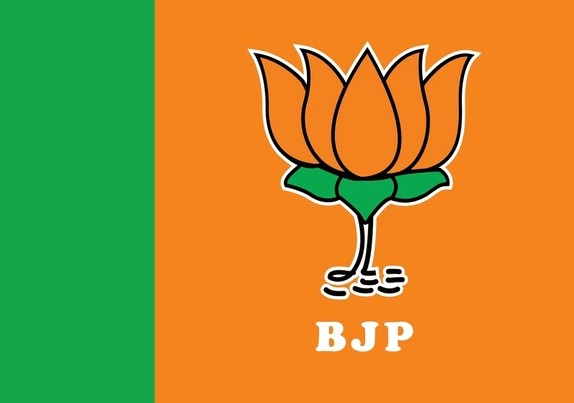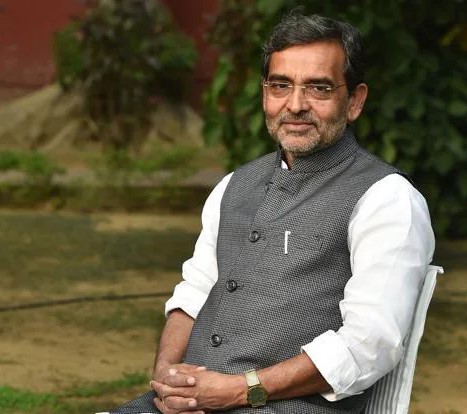Tridib Raman
Prashant Kishor arrived in Bihar with a new political proclamation, that he would become a promoter of ‘hopeful politics’ and that his political party, Jan Suraaj, would be committed to building a ‘new Bihar’ beyond the divides of caste and religion. PK’s political gatherings saw a decent turnout, and some good people joined his party as well. The BJP had hoped that PK would undermine Nitish Kumar’s base and also disrupt the ‘Mahagathbandhan’. But now, it seems the house itself has caught fire, from its own lamp.
Political observers say that if Jan Suraaj maintains its current momentum, it could spoil the BJP’s game on at least 15–20 seats. For instance, in the Siwan Sadar constituency, PK has weakened the electoral prospects of BJP stalwart Mangal Pandey. In the Kumhrar seat, which falls under the Patna Sahib Lok Sabha constituency, PK has fielded noted mathematician Professor K.C. Sinha, a ‘Kayastha’ by caste and Kumhrar, assembly seat is considered a Kayastha stronghold. There are over 1,00,000 Kayastha voters here. Since 2010, Kumhrar has been seen as an impregnable BJP fortress, with Arun Kumar Sinha repeatedly winning from this seat.
However, the BJP dropped his ticket this time and fielded an old RSS worker and seasoned leader, Sanjay Gupta. Reports suggest that traditional BJP supporters, particularly among the Kayastha community, have raised the banner of revolt. And not only in Kumhrar, in several other parts of the state, too, Kayasthas are said to be turning against the BJP. Kumhrar also has a significant number of Bhumihar and Extremely Backward Class (EBC) voters; how they lean will be interesting to watch. Similarly, Jan Suraaj has made the electoral battle in Bhagalpur quite intriguing. The BJP has fielded Rohit Pandey from there, while PK has countered by nominating well-known lawyer Abhay Kant Jha, the same Abhay Kant Jha who had defended Muslims during the Bhagalpur riots without charging any fee. The 74-year-old Jha enjoys a secular image, which could benefit Jan Suraaj in this election. Meanwhile, in the Riga Assembly seat under Sitamarhi, PK has fielded Krishna Mohan, a two-time district BJP president, who has genuinely complicated the chances of the official BJP candidate. However, Jan Suraaj’s momentum faltered slightly after PK announced that he would not contest the election himself.
Caste Prevails in Bihar
Tridib Raman
According to sources, on the eve of the Bihar elections, the IB submitted a report to the top leadership, which highlighted the unpopularity of 30 such incumbent BJP MLAs and advised fielding new faces in their place in the elections. But as the BJP started cutting tickets of its incumbent MLAs at a certain pace, rebellious storms also started gathering momentum. The initial strategy of the BJP core group was that ‘this time, instead of upper castes, field as many OBC and EBC candidates as possible.’ But Prashant Kishor started wooing the upper castes in the state to such an extent that Jan Suraj started being counted as the preferred party of the upper castes; it was natural for the saffron camp to feel the pressure. So, the BJP had to change its ticket distribution strategy. They had to field 15 Rajput candidates, 11 Bhumihars also got the saffron ticket, and 7 Brahmins also had to be accommodated with party tickets. That is, a total of 35 upper castes got tickets at one go. If we talk about the NDA, about 85 seats have been allotted to upper castes, which includes 37 Rajputs, 32 Bhumihars, 14 Brahmins, and 2 Kayasths. Meanwhile, 77 seats have OBC candidates, which include 24 Kushwahas, 20 Vaishyas, 19 Yadavs, and 14 Kurmi candidates. There are also 5 Muslim candidates in the fray from the NDA. In the last election, Nitish had given tickets to 11 Muslims, but all of them lost the election, which is why this time Nitish has fielded only 4 Muslim candidates. Observers point out that the kind of unease and bitterness seen this time in the relations between Nitish and the BJP has percolated down to the lower cadres of the JDU. So, sources claim that in these elections, JDU votes will barely transfer to the BJP; BJP voters might also follow a similar pattern, as JDU is no longer their natural choice. In such a scenario, the strike rates of both the BJP and JDU could fall, which the opposition camp could benefit from.
BJP’s Masterclass in Electoral Management
Tridib Raman

When it comes to perfecting the art of electoral management, the BJP has few equals. Opposition parties would do well to memorize the lessons the BJP offers, on how to excel in both vote and voter management. The BJP and RSS began preparing for the Bihar Assembly elections almost a year in advance, with remarkable diligence. To execute this extensive plan, one of the RSS’s affiliated organizations, the Bharatiya Mazdoor Sangh, took the lead. This campaign specifically targeted nearly 30 million migrant workers from Bihar, who travel across the country in search of livelihood. More than 150 BJP leaders, including several chief ministers from BJP-ruled states, were deployed for the mission. The first step involved the circulation of a detailed survey form, which collected comprehensive data on Bihari migrant workers, including their caste, income level, and political preferences, as well as their opinion of the BJP as a political party. Then, as part of a calculated strategy, the election dates in Bihar were announced after the Chhath festival, since migrant workers usually return home to Bihar for Diwali and Chhath. To facilitate their return, special trains were run from states like Punjab, Haryana, Delhi, Maharashtra, Gujarat, Odisha, Tamil Nadu, and Jammu & Kashmir. Extra coaches were attached to existing trains, and in some states, special bus services were arranged directly to Bihar. Employers of these workers, whether factory owners or farm managers, were approached to grant them leave and advance pay, ensuring they could go home for Chhath, vote, and then return to work. Among the most active participants in this initiative was Haryana Chief Minister Nayab Singh Saini, who reached out to Bihari workers, declaring: “I consider myself a Bihari too, since I spent a long time in Sitamarhi while working for the Sangh.” He even promised financial assistance: “I will contribute one lakh rupees towards the wedding of daughters of Bihari migrant workers. They can come to me three days before the wedding to collect it.” According to BJP strategists, if even 2.5 to 3 million migrant workers can be mobilized to vote in Bihar, the total influence, including their family members, could exceed five million votes in the BJP’s favour. This time, the party has set itself an ambitious goal of 10 million votes in Bihar. In the 2015 Assembly elections, the BJP had secured about 24–25% of the vote, which fell to 19.5% in 2020, roughly 5.4 million votes. The current campaign targeting migrant Bihari workers is designed to double that tally and strengthen the BJP’s electoral base in the state.
BJP’s Focus on Rajput Voters
Tridib Raman
In Bihar elections so far, the BJP has generally been successful in securing the Rajput vote. However, in this election, a sense of restlessness is visible among Rajput voters. This unease could also be because the BJP’s top leadership, knowingly or unknowingly, neglected Rajput leaders from Bihar. Whether it’s R.K. Singh or Saran MP Rajiv Pratap Rudy, the party had somewhat sidelined them. Although belatedly, when the party became aware of the discontent among Rajputs in the state, a damage control campaign also started simultaneously. The BJP has fielded a record 15 Rajput candidates in this election, and efforts began to be made to address the grievances of leaders like R.K. Singh and Rudy. According to sources, Rudy, who was overlooked by the BJP top leadership in favor of Sanjeev Balyan in the Delhi Constitutional Club election, has now gained prominence within the party. The party’s strategist not only called him and requested him to fully engage in this election but also launched his own election campaign from Rudy’s parliamentary constituency, Saran. To attract Rajput voters, Yogi Adityanath has been assigned an extended duty in Bihar. First, Yogi came to Bihar and went to Danapur to file Ramkripal Yadav’s nomination; then he also went to Shahabad, where the Rajput-Kushwaha equation had soured during the Lok Sabha elections. In Danapur, Yogi hinted at his intentions by raking up the issue of development versus the burqa.
Kushwaha Factor in the NDA

While there is still internal squabbling among the constituents of the Mahagathbandhan, an unspoken peace prevails among the NDA’s constituent parties. BJP leaders sweated profusely in placating Chirag Paswan and Nitish, as well as Upendra Kushwaha. Nitishyanand Rai played the most important role in pacifying Upendra Kushwaha. He once again reached out to Amit Shah regarding Kushwaha, where past grievances were resolved. Kushwaha received an assurance from the BJP top brass: ‘You wholeheartedly join the election campaign, we will take full care of you. Next time, you will be sent to the Rajya Sabha again, do not worry about this at all.’
Will Priyanka Chaturvedi Switch Allegiance to the Samajwadi Party?
Shiv Sena’s fiery spokesperson Priyanka Chaturvedi may once again be facing a pivotal political choice. With her Rajya Sabha term ending in April 2026 and the Uddhav Thackeray-led Shiv Sena showing little interest in renominating her, Priyanka has reportedly begun building bridges with the Samajwadi Party (SP) through MP Jaya Bachchan, opening channels with SP chief Akhilesh Yadav. At the same time, reports in political circles suggest that AAP MP Sanjay Singh has also been quietly strengthening ties with Akhilesh, reportedly frustrated with Arvind Kejriwal’s commercialization of AAP, highlighting a shifting political landscape.
